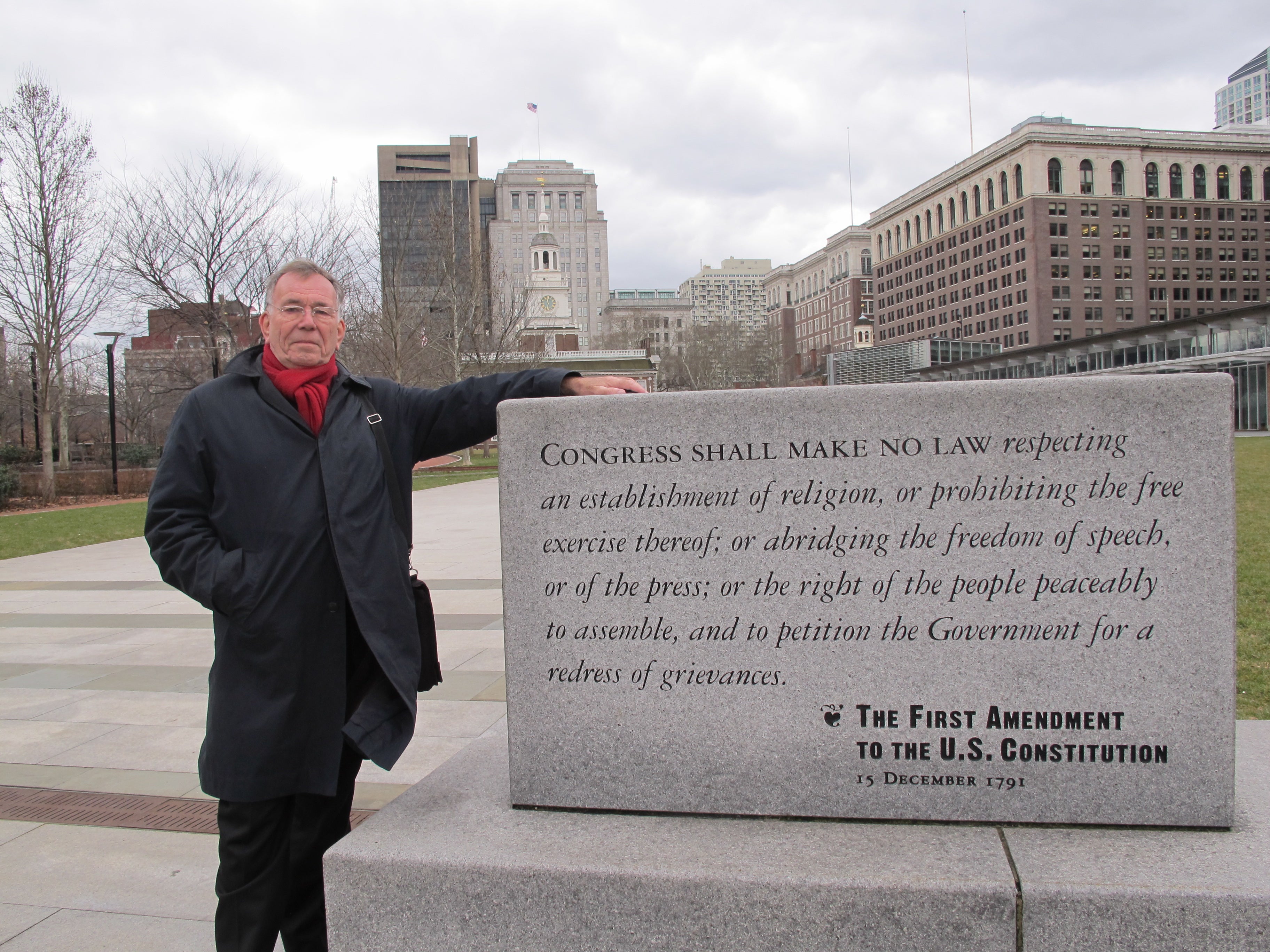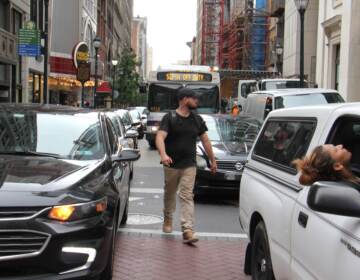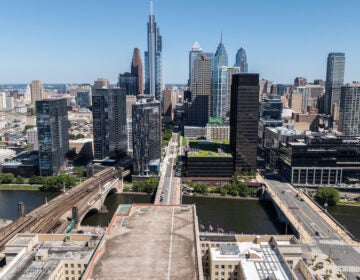2016 Rewind: Five people who shaped our thinking

This week we’re doing our morning roundups a little differently. We’re looking back at the year that was through our stories. In 2016 PlanPhilly published more than 700 pieces. (How many did you read? If you read PlanPhilly regularly, please consider supporting our work by making a tax-deductible donation before the end of December.) Today we’ll revisit time spent with five people who shared their unique perspectives about urban design, housing, parking, and architecture with Philly this year.
Walking Market Street with Jan Gehl
In March, I took Danish urbanist Jan Gehl for a walk on Market Street from Old City to City Hall. Gehl sees people as the fundamental unit of planning, which leads to a more humanistic approach to city design, and his work has made cities across the world more livable, healthy, and inclusive. On our walk through good, poor, and redeemable blocks of Market Street, Gehl was especially struck by the First Amendment monument at Independence Mall. He asked me to take his photo and read it aloud, connecting our highest ideals of freedom with the power of planning public spaces that support the exercise of our rights.
“I’m very much working for the ‘right for the people to peacefully assemble’ and to ‘petition the government for redress of grievances’,” he said quoting the amendment. “I think that’s very much what urban planning ought to be about in a democracy. I refer to this very, very frequently that in America the First Amendment does say this and in many, many cities you can only exercise this right in the shopping mall, where you cannot actually exercise it.”
Matthew Desmond on America’s eviction epidemic and housing as a non-partisan issue
This fall Matthew Desmond, author of “Evicted: Poverty and Profit in the American City,” came to Penn for a lecture just after the November election. In a time when so many housing advocates feel adrift, uncertain, and dubious about what such a radical regime change might mean, Desmond offered perspective:
“There is ignorance on both sides of the aisle and there’s good will and work on both sides of the aisle. One thing the election has taught us is that we need to be better in tune with folks with different kind of politics. Especially because, with housing issues, it’s impossible to get anything major done without bipartisan support.”
He also offered a call to action.
“This degree of inequality, this needless social suffering and denial of basic rights, this isn’t us,” said Desmond. “This doesn’t have to be us. By no American value is this situation justified. There is no ethical code or piece of scripture or holy teaching that can be summoned to defend what we’ve allowed our cities to become.”
Bjarke Ingels on building at the Navy Yard, designing dreams
Another Dane, another dream. Danish architect Bjarke Ingels’ star has ascended thanks to worldwide work that turns everyday needs into fantastic reality. His firm, BIG, just added a new building to Philadelphia’s Navy Yard, which has a periscope from the lobby to view Naval vessels in the water nearby. He also designed a smoke-ring blowing trash-to-energy plant in Copenhagen that doubles as a public ski mountain. Ingels was in town to accept the 2016 Louis I. Khan Memorial Prize and talked about designing at the Navy Yard as well as his approach to architecture.
“I love this idea that somebody visits Europe in two years. They come home and they say Europe is an interesting place. In Venice in Italy they sail in gondolas through streets paved with water. In Denmark they ski on their power plants and turn their waste into electricity and heating and where the chimneys puff gigantic smoke rings. That’s just how it is in Denmark. …. I think that whenever we are invited to intervene in a situation it also means that not only do we have the possibility we actually have the responsibility to make the city and the world we live in a little more like our dreams.”
Four ideas for fixing parking politics from Donald Shoup
Donald Shoup, UCLA professor and urban parking guru, was in Philly this year spreading the gospel of “The High Cost of Free Parking” – or to put it another way – why cities should charge the “right” price for curb parking. What’s right? It’s the price that keeps a couple of spaces open on every block and that takes parking proceeds and reinvests in metered areas. Drivers, Shoup argues, barely shoulder the true costs of parking – from traffic to expensive housing to auto-centric land use. Jon Geeting caught up with Shoup on his visit to Philly to talk about parking benefits districts, employee transportation incentives, and student transit passes. They also discussed parking permit blacklists – an idea that could shift neighborhood conversations about dense new development.
“If you’re in a permit district, and new residences don’t have any permits, then you can’t say that it’s going to create any competition for ‘my’ parking.”
Finding the form with Cecil Baker
Closer to home, we profiled architect Cecil Baker who is reshaping Philly’s skyline from projects like One Riverside on the banks of the Schuylkill to the rising luxury tower at 5th and Walnut streets. He’s best known to us for designs that are contextually sensitive, and his outspoken and ever-quote-worthy feedback at Civic Design Review meetings. He’s also an architect and developer that seeks to serve the human dimension in design considerations. In talking with Jared Brey about his experience designing 4224 Baltimore Ave near Clark Park, Baker offered perspective on NIMBYism and generational differences in public design conversations:
“[Young people] don’t come from a place of fear, where my generation did,” Baker said. “By my generation, I’m largely talking about the hippies. That was my generation. We wrought a lot of change, and we did a lot of good things. But after it was all over, and we got our changes, we were the NIMBYs. … And the millennials have totally changed that paradigm in the city. It was evident at 43rd and Baltimore, places like that that you couldn’t have gotten those kinds of disturbances and not-living-with-the-zoning-code type things to happen if you didn’t have these young voices that were saying, ‘Hey, what about it? We don’t need to be this way. Let’s come out into the sunlight.’”
WHYY is your source for fact-based, in-depth journalism and information. As a nonprofit organization, we rely on financial support from readers like you. Please give today.







